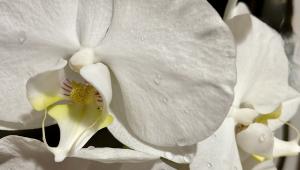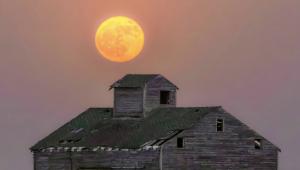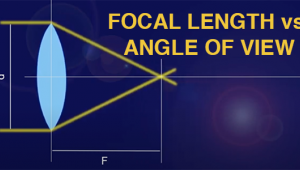I have taken hundreds, if not thousands of butterfly macros and never seen the need to catch, or cool my subjects until lethargy sets in; so they can be "handled" better! This treatment of wildlife is not only unethical but unprofessional. I am appalled that Shutterbug would list this as a viable, "professional" technique. In my opinion if you can't capture a Monarch on a milkweed without hocus pocus hang up your camera, or maybe you should specialize in taking stills of bananas and oranges and leave nature and wildlife to the pros.
Photographing Butterflies: A “Catch And Release” Technique
For example, macro photography is extremely challenging with respect to lighting, depth of field, maintaining sharp focus with a moving subject and finding attractive backgrounds. This is particularly true when shooting butterflies. Many of these beautiful insects never seem to rest, and to use a fast enough shutter speed to freeze them in flight or to stop their fluttering wings is virtually impossible. In addition, a small lens aperture for good depth of field is impossible because you need a fast shutter speed, and no one wants to shoot butterflies with extremely high ISO settings. If the insect pauses for a few seconds and positions itself so you can get a shot with an attractive background, the opportunity may last a second or two at the most. As soon as the butterfly senses your movement as you get within shooting range, it’s gone.
Another problem is that butterflies often nectar with their wings held in a dihedral angle—a V shape. This means that to get both wings completely in focus plus the head and antennae, let’s just say this is next to impossible to do in the wild.
How, then, did I get the shots you see in this article?
I used the fact that butterflies (and other insects as well) can be controlled with temperature. What I do is catch a butterfly in a butterfly net (I bought one recently on eBay for $16), and then I place it in a plastic container. When the insect is in the net, I simply hold the closed end up toward the sky and the butterfly flies up into it. I can slide the small plastic container into the end of the net to capture the fluttering insect. Then I place the closed container in my refrigerator. (When I have been in tropical countries and didn’t have the convenience of a refrigerator, I placed the container in front of an air conditioner unit.)
In the cold, dark environment, the butterfly rests and then, in a few minutes, it becomes lethargic and then falls over as if it’s passed out. It looks dead, but it’s not. After all, when temperatures cool down at night during the spring and summer, butterflies cling to the underside of leaves and wait until mid-morning when they can fly again. The refrigerator simply simulates the temperatures these insects experience in nature.

All Photos © Jim Zuckerman, All Rights Reserved

As soon as I see that the butterfly has reached this state, I gently take the insect out of the container and place it on a leaf or flower in my kitchen. Butterflies need about 55-60˚ to fly, and they use their open wings as solar panels to gather heat to warm their wing muscles. I place a lamp, minus the shade, close to the butterfly, and it responds in a minute or two by opening its wings as if the light bulb were the sun (some species of butterflies almost never open their wings when resting, but most of them will oblige us by opening their wings fully when they are warming their muscles). Species like the tiger swallowtail (#1) and the buckeye (#2) will open their wings for quite a while before they warm and want to fly. The same is true of the red-spotted purple (#3). I wanted very much to capture the beautiful blue markings in its wings, and it held this position for many minutes. I even took it outside on the bark background (a fireplace log) and it stayed like this until it flew away. The many pops from the flash didn’t seem to bother it at all.

You will want to capture the underside of the wings when the butterflies fold them above their bodies. The monarch butterfly is beautiful no matter how it holds its wings. I took (#4) when it first came out of the refrigerator and before it spread its wings.

Some species will open their wings for a very short time and then they are ready to take off. The variegated fritillary (#5) gave me about 10-15 seconds of shooting time before it became active again. I put it back into the refrigerator until I could get a second photo session and then I let it go.

In this way, I can capture the beauty of the wings, and by using a flash and a small lens aperture I can have complete depth of field. I prefer to use a ring flash because it provides even light throughout the composition, simulating soft and diffused light from an overcast sky. Other types of flash setups can work as well, such as a twin macro flash setup. I set the camera on Manual Exposure mode and the flash on ETTL. All of the pictures you see here were taken with a 50mm macro lens at f/32. If the butterfly is quite small, I will add an extension tube placed between the lens and camera body to allow me to move in closer and fill more of the frame with the subject.
To solve the problem of a distracting background, I have a simple technique I use when shooting macro shots of flowers, leaves and insects. I make a large print (13x19”) of out of focus foliage. I use an image that I took in muted light so the soft green colors don’t have a lot of harsh contrast. I then mount the print on a piece of foam core, and when I shoot a butterfly or any other macro subject, I hold (or have a friend hold) the mounted print behind it. If I close the lens aperture down to gain depth of field on the insect, the background stays beautifully out of focus and therefore very complimentary and non-distracting.

If you want to make the pictures look completely natural even to the point of not using a flash, some species will open their wings when taken outdoors and they will pose for you until they warm up and are ready to fly. The luna moth (#6) and the pearly crescentspot (#7) were done that way. If there is any wind, this won’t work because the pictures will be blurred even if you use a tripod. Assuming you want depth of field (which I feel is critical), the small lens aperture means a slow shutter, and if the subject is moving even slightly, you can’t make a sharp image.

Sometimes butterflies aren’t cooperative even under these conditions. When I captured a red admiral, I cooled it down in my refrigerator and when it was taken out and put on a rock, it went from wings folded to instantly flying. I tried again, this time leaving it in the cold for 15 minutes. It did the same thing for a second time, heading to the windows and fluttering toward the light. The only thing I could do at this point was to photograph the butterfly on the window sill where it had opened its wings and then in post-processing use Photoshop to meticulously cut it out and put it on an attractive background. That’s what you see in (#8).

- Log in or register to post comments


I have photos of all of the butterflies shown in this article, of equal quality, and did not have to resort to touching the insects, let alone putting any in my refrigerator. I'm gobsmacked that Shutterbug couldn't find a photographer to write on this subject who has a little more respect for wildlife.

My philosophy concerning all my nature photos has always been the same: The thrill of the hunt is a major factor in the enjoyment of photography. No matter how great the resulting photo would look, if I knew I had to stage it to get those results I would never be satisfied with it. Yes, refrigeration can mimic real life temperatures; but what does it do the natural life cycle of the butterfly when those temps are applied at the whim of the photographer, rather than occuring naturally and seasonally?

Patience, 70-200 zoom, steady hand, sunshine have resulted in dozens of colorful, detailed, beautiful butterfly pix. Would never consider doing it any other way. What would be next...tranquilizers for other wildlife to make them look natural? Or we could photograph stuffed heads on the wall. No way, ever!












































